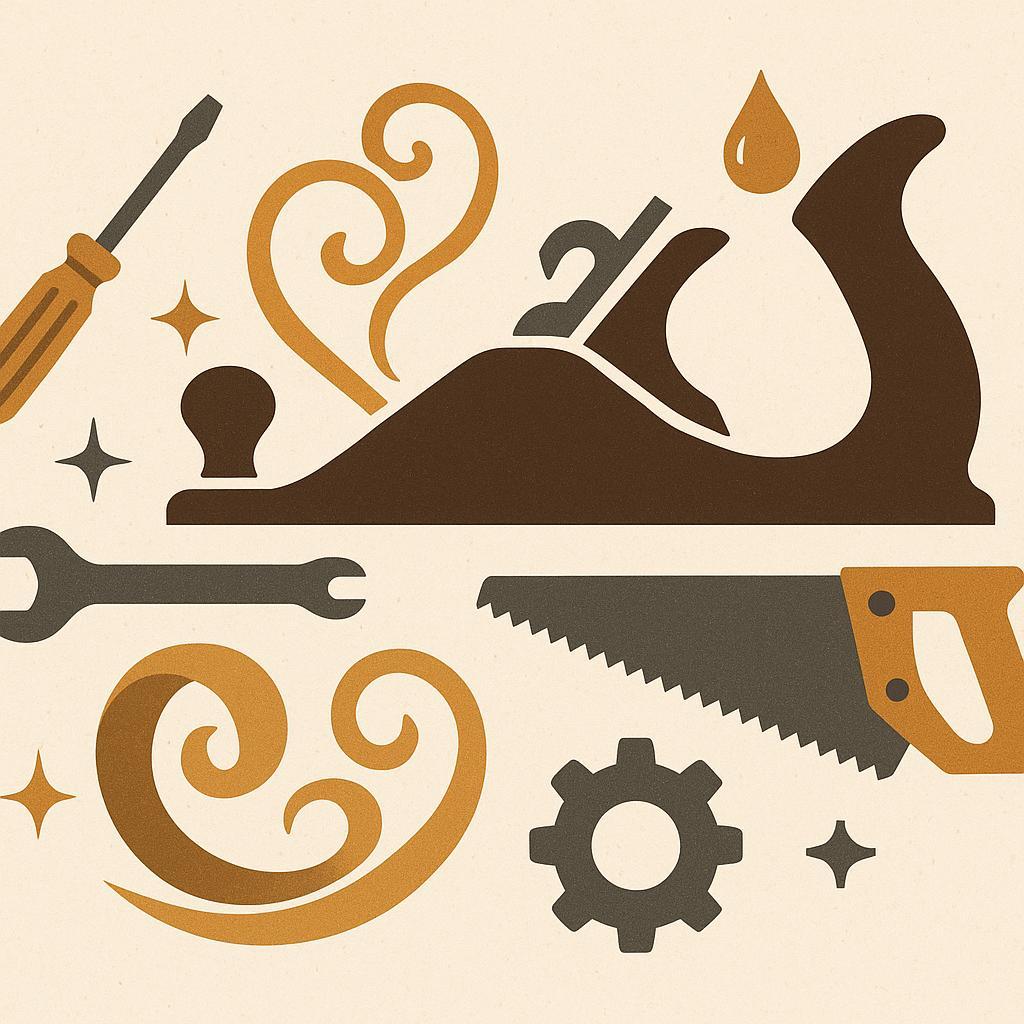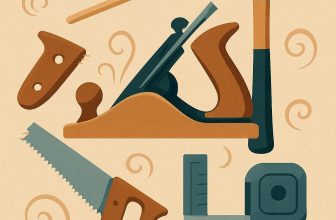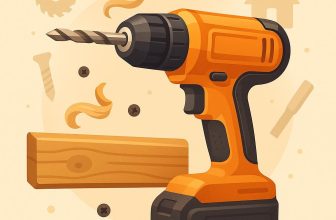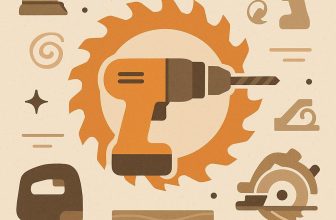
Your best project begins long before you touch the wood: it starts with how you treat your tools. The sharpest edge you'll ever rely on is the one you nurture. regular care prevents dullness, rust, and misalignment, so projects stay accurate and safe. For woodworking enthusiasts, tool maintenance isn't chores; it's the foundation of quality, efficiency, and pride in craft. In this article you'll learn a practical routine: cleaning and sharpening, lubrication and storage, inspection and calibration, and planning a simple care schedule-so every cut feels effortless and your kit lasts longer.
Sharpening and Edge Maintenance for Woodworking Tools
sharpening is less about chasing sharpness and more about sustaining a precise edge that handles fibers with ease. A well-tuned edge reduces tear-out, keeps surfaces flat, and extends tool life. Start by auditing your current edges: note any rounded bevels, chips, or wobble in the face. Build a simple setup that fits your shop: a flat stone or two, a flattening plate, a honing guide if you use one, and a light oil or water tray to wash away slurry.With a routine in place, your tools become reliable partners rather than stubborn foes.
| Tool category | Grit range (typical) | Notes |
|---|---|---|
| Plane irons & chisels | 1000-4000 | Restore geometry and edge; finish with higher grit |
| Carving gouges | 400-1000 | Preserve curve; avoid rounding the edge |
| Turning tools | 1000-4000 | Edge refinement and micro-bevels for durability |
With your sharpening station set, follow a clear workflow to keep edges consistent. Begin by inspecting the edge's burr and removing it with light strokes; flatten your stones as needed to keep edges square. Move through a logical grit progression: start coarse enough to restore geometry, then mid grits to refine, and finish with a high grit for a glassy edge. Maintain a steady bevel angle-an honing guide or a intentional hand helps here-and consider a small micro-bevel for durable cuts on hard woods. remove the burr with a gentle final pass and test the edge by shaving a light curl of wood or tracing a pencil line to see if the cut bites evenly.
Beyond sharpening, edge maintenance means regular stone care, stropping, and safe storage. Keep stones flat with a leveling plate, clean away slurry after each session, and re-check angles as you switch tools. A quick monthly flattening and a routine stone refresh keep your edges honest. When you finish, wipe tools dry and store them in a dry, organized rack or cabinet to prevent rust. Building these small habits pays off in cleaner cuts, safer handling, and less downtime over the life of your workshop.
Build Your Dream Workshop on a Budget →
Rust Prevention and Surface Protection for Woodworking Tools
Moisture is the silent thief of tool longevity. Rust thrives where metal meets damp air, so start with a routine that keeps surfaces dry and lightly protected. After every session,wipe blades,irons,and bodies clean and dry. Apply a thin film of mineral oil or a wax-based protectant that forms a breathable barrier; too thick a layer can gum moving parts or attract dust. For high-carbon steels common in chisels and plane irons, emphasize quick, frequent protection rather than heavy coatings that must be scraped off before use.
Create a protective environment in your shop to make rust prevention automatic.Keep relative humidity around 40-60% and store tools in a dry cabinet, on shelves, or on pegboards with good airflow. Use desiccants or silica gel packs in chests or drawers to absorb lingering moisture. Store blades and edges with edge protection-blade guards or simple pouches-so they stay dry and ready when you reach for them.
| Tool area | Protective approach | Ideal storage tip |
|---|---|---|
| Metal cutting edges (blades, irons) | Apply a thin film of mineral oil or microcrystalline wax | Store dry in a ventilated space; aim for 40-60% RH |
| Tool bodies (cast iron/steel bodies) | Light oil coating; wipe clean before use; optional wax barrier | Use desiccants in drawers or cabinets; avoid damp stacking |
| Wooden handles | Wipe with mineral oil or paste wax to slow moisture ingress | Keep dry and out of direct humidity; inspect for swelling |
Make a simple maintenance rhythm part of your routine. Before you begin a project, wipe and inspect edges for dull spots or signs of corrosion; after use, reapply a protective film and recheck humidity. For wooden handles, wipe with mineral oil or paste wax every few months to prevent cracking and swelling. If you notice any rust spots, address them quickly with a light re-clean, a tiny amount of sanding on affected areas, and a fresh coat of protection.
Build Your dream Workshop on a Budget →
Cleaning and Lubrication Practices to Extend Woodworking Tool life
Regular cleaning after each session helps slow rust and resin buildup and keeps surfaces moving smoothly. Start with a quick wipe: use a stiff brush or a dry microfiber to remove dust and pitch, then wipe metal surfaces with a cloth lightly dampened with mineral spirits or a dedicated tool cleaner. Dry everything thoroughly,then apply a thin film of light mineral oil or camellia oil to exposed metal parts. For storage, keep tools in a dry, ventilated spot-ideally with a silica gel pack or in a cabinet that blocks humidity. This simple habit pays off by reducing corrosion and easing future sharpening and tuning.
Tools vary, so tune lubrication accordingly. For planes, apply a thin layer of paste wax to the sole to reduce friction and protect the finish while keeping the throat and adjustment screws clean. For chisels and gouges, wipe clean and dry, then rub a light film of oil on the blade steel to deter rust-avoid pooling near the edge, and wipe off before sharpening. For saws,clean the blade to remove pitch,then store with teeth guarded and,if you like,a very light oil coating on the blade to slow rust during long storage. For drill bits and router bits, clean the shanks and flutes, dry fully, and apply a faint coat of oil or storage wax to the shanks and carbide tips; avoid excess oil on cutting edges just before use to prevent staining your work.
Establish a simple maintenance cadence: quick daily wipe-down, a deeper clean monthly, and seasonal checks for rust or dull edges. Keep spare rags, a bottle of light mineral oil, a can of paste wax, and a dedicated brush within arm's reach. When storing,choose a dry rack or cabinet; consider conditioned storage with desiccants or rust-inhibiting paper. document your routine so every step becomes second nature and your tools stay sharp,precise,and ready for the next project.
| Tool Type | Cleaning Focus | lubrication / Protection | Notes |
|---|---|---|---|
| Hand Plane (body and iron) | Clean sole, mouth, and iron; remove pitch | Wax the sole; light oil on moving parts | Avoid heavy oil near the cutting edge |
| Chisels and Gouges | Wipe clean and dry | Light oil on blade steel; wipe before sharpening | Use protective blade guards |
| Hand Saws | Remove pitch; brush teeth | Light oil on blade for storage | Dry before use; sharpen regularly |
| Drill Bits | Deburr shanks; clean shanks | Light oil on shank; wipe off before use | Store in a dry index or case |
| Router Bits | Clean flutes | Light oil or storage wax on shank | Dry before use; avoid residue on carbide edges |
Build Your Dream Workshop on a Budget →
storage and Organization for Woodworking Tools
Smart storage starts with a plan. Designate zones for hand tools, measuring devices, power tools, and consumables so every item has a home. Choose a dry, well-ventilated space with doors or sealed shelves that keep dust out and humidity down. For long-term storage, wipe tools clean, apply a light film of oil to blades and cutting edges, and avoid stacking sharp edges against one another to prevent nicks and corrosion.
Shelves, walls, and drawers should be organized around how you work. Install a wall-mounted pegboard with 1-inch spacing for quick access to chisels, screwdrivers, and marking gauges. Use labeled drawers for small hardware, and reserve a sturdy shelf or rolling cart for power tools. Label zones clearly and color-code by tool type to speed cleanup and reduce misplacement.
Protective storage matters as much as the tools themselves. Store blades,bits,and chisels in protective sheaths or dedicated holders,and consider soft liners in drawers to cushion edges. Place moisture controls like silica gel packs in boxes or tool chests, and wipe metal surfaces with a light coat of oil periodically to deter rust. When transporting tools, use a padded case and keep sharp edges covered.
| Storage Type | Pros | Quick Tip |
|---|---|---|
| Pegboard wall | Easy access; highly customizable | Use labeled hooks and anti-slip liners |
| Drawer with dividers | Protects edges; keeps small parts organized | Line with soft material; color-code for clarity |
| Tool chest with foam inserts | Excellent protection; portable | Carve recesses to fit each tool |
| Clamps/large tools shelf | Secure storage for bulky items | Use straps or non-slip mats for stability |
Build Your Dream Workshop on a budget →
Regular Inspection and Maintenance scheduling for Woodworking Tools
Establishing a regular inspection and maintenance cadence turns tool care from guesswork into a reliable habit. A thoughtful schedule helps catch wear before it affects accuracy or safety,and it makes downtime predictable rather than disruptive. Start by grouping your tools into core categories-hand tools (chisels, gouges, planes), power tools (drills, routers, sanders), and blades or bits-and map out a basic rhythm: quick checks after every session, a deeper tune-up weekly or biweekly, and periodic overhauls every few months.
Build a calendar that suits your workshop pace and stick to it. For quick, daily wins, unplug the tool, inspect guards, and wipe away dust. Weekly,clean and lubricate pivot points,test safety features,and ensure dust collection is flowing.Monthly, check alignment and depth settings, sharpen or replace blades and bits as needed, and inspect cords and switches for wear. These small, regular actions compound into longer tool life and cleaner cuts.
- Daily quick checks: power off, guards and switches move freely, no visible damage.
- Weekly deep checks: lubrication, dust removal, belt or spring tension where applicable.
- Monthly performance checks: alignment, blade sharpness, safe reassembly after service.
- Quarterly overhauls: calibration of fences/rails, electrical safety audit, external rust removal and protective coating.
To stay organized, keep a simple maintenance log that records what was checked, what was replaced, and when the next due date arrives. This not only creates accountability but also helps forecast part replacements and plan purchases in advance. A visible reminder on your workshop wall or in your project notebook can be enough to keep you on track during busy seasons.
| Tool category | what to inspect | Recommended frequency |
|---|---|---|
| Table saw blades and cutters | Blade condition, alignment, guard and riving knife | Monthly; after heavy use |
| Power drills, routers, and sanders | Power cord, switches, bearings, dust collection | Monthly |
| Hand tools (chisels, plane blades) | Edge sharpness, rust, handles, honing | After each major project |
Build Your Dream Workshop on a Budget →
Safe Use and Handling to Maximize Woodworking Tool Longevity
Safe use and handling is the foundation for unlocking the longevity of your tools. Begin with a steady stance, confident grip, and deliberate motions to minimize stress on edges and fasteners. Use push sticks for narrow stock, clamps to secure work, and keep the shop well-lit to maintain control. When you handle tools with care, you reduce misfeeds, chatter, and accidental damage-proof that good habits pay off in tool life. Respect for sharp edges is respect for your investment.
Keep blades, chisels, and bits sharp and properly supported. A dull edge requires more force, creates heat, and invites micro-chips that dull tools faster. Follow a disciplined sharpening routine suited to each tool, protect edges with guards or sheaths, and transport tools in padded or sheathed containers. Remember: never use improvised grips or pliers to fix a stuck blade.
Clean and dry tools after finishing a session. Wipe metal parts with a dry cloth and apply a light coat of oil to prevent rust; avoid soaking wooden handles.for storage, let everything come to room temperature before placing it in a rack, and use individual slots or sheaths to prevent teeth from banging together. Moisture control and proper drying are essential for long-term performance.
Make maintenance part of your workflow with a simple cadence. Before you start, inspect for nicks, loose screws, or wobble; tighten as needed.After you finish, re-seat edges, wipe surfaces, and reapply protective coatings as recommended by the tool manufacturer. If you notice unusual heat, vibration, or smoke, stop and assess rather than forcing the tool. A consistent routine of inspection, cleaning, and proper storage keeps your tools ready and extends their life.
| Task | Tool/Area | Frequency | Notes |
|---|---|---|---|
| Cleaning and drying | All metal tools | After use | Wipe, dry, light oil |
| Edge maintenance | Blades, chisels, bits | When dull / monthly | Sharpen with proper method |
| Lubrication of moving parts | Planers, routers, jigs | Weekly | Apply light oil; wipe excess |
| Rust prevention | Metal surfaces | Storage or high humidity | Oil coat; store dry |
| storage protection | All tools | Seasonally | Guard edges; separate tools |
Build Your Dream Workshop on a budget →
Q&A
How often should I sharpen my woodworking tools?
Dull tools drift and cause tear-out, so check after each session. Test a scrap by shaving lightly; if it refuses to cut cleanly or drags,it's time.Do light touch-ups regularly and schedule full sharpening when the edge starts to feel dull or chipped.
What's the best way to prevent rust on hand tools?
Clean and dry every tool after use, then apply a light protective oil to blades and metal surfaces. Wipe away excess oil and store in a dry environment with good ventilation. Avoid damp cloths or leaving tools in humid spots, and consider desiccants in storage if humidity is high.
How should I store chisels and planes to extend their life?
Keep edges sheathed or covered, and store tools with their edges supported off hard surfaces. Use a padded toolbox, tool roll, or dedicated racks to prevent nicks and dulling. Organize by tool type and ensure handles aren't pressing against metal.
Do power tool blades require different care than hand tools?
Yes. Always unplug the tool before maintenance, then clean dust and debris from the blades and housings.Check alignment and lubrication of moving parts per the manual, and sharpen or replace blades when they lose performance.
Insights and Conclusions
Consistency is the compass in the workshop: small, regular acts of care keep tools honest, ready, and sharp when inspiration arises.A quiet routine-wipe steel, dry joints, inspect edges, oil moving parts, and store properly-translates into cleaner cuts, safer work, and longer tool life. The takeaway is simple: maintenance is a habit, not a one-off chore, and it respects both the materials and your craft. For woodworking enthusiasts, dependable tools unlock predictable results and the confidence to try new projects. Start today: sharpen a blade, oil a hinge, or read another guide, and apply what you learned. Your future projects will thank you.







Great tips, especially about regular oiling and keeping tools dry! Maintenance really extends their lifespan. Thanks for sharing!
Absolutely agree, Andrew! It’s amazing how a little bit of care can go a long way in preserving the quality of our tools and ensuring they perform their best.
Totally agree, Andrew and Donna! Investing a little time in maintenance not only keeps our tools in top shape but also enhances our woodworking experience. It’s all about that proactive care!
I couldn’t agree more with all of you! Regular maintenance not only saves money in the long run but also makes every project more enjoyable when your tools are working at their best. Keep spreading the knowledge!
I think we all know that a well-maintained tool is a happy tool! Taking the time to clean and sharpen not only boosts performance but also makes woodworking even more enjoyable. Thanks for the helpful tips!
I love how everyone is emphasizing the importance of tool care! It’s such a simple yet crucial aspect of woodworking that can make a world of difference in both safety and efficiency. Thanks for sharing these insights!
I completely resonate with all your points! Taking the extra time to care for our tools not only extends their lifespan but also elevates the quality of our craftsmanship. Let’s continue to share our tips and experiences to keep our woodworking community thriving!
Absolutely, maintaining our tools is essential for both safety and precision in our projects! I’m excited to hear more tips from everyone and to learn how to elevate our craftsmanship even further. Cheers to keeping our woodworking journey smooth and successful!
Absolutely, it’s so inspiring to see everyone sharing their thoughts on tool maintenance! A little care goes a long way in ensuring our woodworking tools perform at their peak, helping us achieve the best results in our projects. Let’s keep exchanging tips and supporting each other in this craft!
I couldn’t agree more with all the comments here! Consistent maintenance is key to not just prolonging the life of our tools, but also enhancing our overall woodworking experience. Let’s keep this conversation going and share those invaluable tips to ensure our craft always shines!
I totally echo everyone’s sentiments! Regular upkeep of our tools not only maximizes performance but also fosters a deeper connection to our craft. I can’t wait to share and learn more tips from this wonderful community to keep our woodworking skills sharp and our tools in top-notch condition!
I wholeheartedly agree with everyone here! The care we invest in our tools truly reflects our passion for woodworking, and sharing our maintenance secrets can only help us all improve as craftsmen. Looking forward to learning and growing alongside this amazing community!
I completely resonate with everyone’s enthusiasm for tool maintenance! Taking the time to care for our woodworking tools not only ensures they last longer but also enhances our craftsmanship. I’m eager to exchange ideas and techniques with this talented community to elevate our skills and keep our tools in prime shape!
I couldn’t agree more with everyone! Proper maintenance is crucial for keeping our tools in great shape and ultimately improving our woodworking projects. I’m excited to share and hear more tips from this fantastic group to help us all hone our skills and ensure our tools serve us well for years to come!